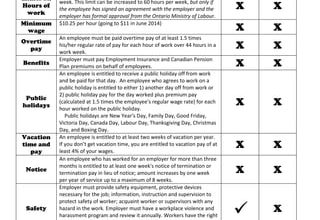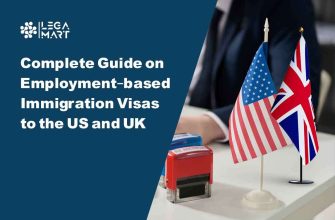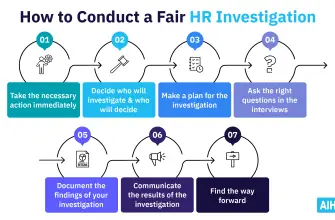Suppose you have an employment dispute with your employer and have applied for an employment tribunal claim. Before going to a tribunal hearing, ACAS – Advisory, Conciliation, and Arbitration Service, a public organisation funded by the UK government, try to resolve the issue (s) between the migrant worker and the employer.
The ACAS works as a medium and convinces recruiters and workers to agree on a mutually decided settlement. This agreement is done through a document commonly known as COT3 Agreement. Advisory, Conciliation, and Arbitration Service named this document (s) of settlement or agreement as ‘COT3’.
In this guide, I’ll explain all the queries that come to your mind when you first hear the word “COT3”. So read till the end for all your answers regarding settlement(s). This guide will cover the introduction to the COT3 document to its difference from a normal settlement.
What is a COT3 Form?

A COT3 Agreement is a settlement agreement between employers and employees that can help resolve disputes quickly. Such agreements are legally binding and are used when both parties agree to settle the dispute without further action.
You can get COT3 once you have agreed with your recruiter with the help of ACAS. That’s why it is also commonly known or referred to in different terms, such as;
- COT3 settlement
- ACAS settlement
- COT3 agreement
COT3 is a settlement without getting into any dispute or legal action. This document outlines the terms for settling the tribunal hearing for your claims against your recruiter. Moreover, it usually includes compensation in favour of you for giving up against your claim in a tribunal hearing or withdrawing from legal actions you have taken or started.
The credibility of this form is that it will legally bind both parties to take any action. As a result, both the employer and the employee sign the COT3 form in the presence of an ACAS officer. After signing, they keep the document as a record for conciliation.
From a legal perspective, completing and signing this form is not a strict requirement. However, from the law’s perspective, verbal and written settlement after the ACAS conciliation is a must.
Check out: DBS Check Documents
What does COT3 stand for?
You already know the definition or the meaning of the settlement document – COT3, but you might think of why it is called COT3, not any term or its abbreviations. Well!!! There is the interesting answer (s) to these questions.
Regarding the abbreviations, there are different theories, or you can say ideas or guesses. Isn’t this strange or maybe interesting?
- However, some people say it derived when the Central Office of Tribunals (COT) used to have a Form 3 (settlement agreement template). Therefore, it can also be a COT3.
- On the other hand, others suggested it is an acronym for ‘compromise of the tribunal’. Although, they didn’t give the concept of ‘3’.
- It has no acronym, and these letters do not stand for anything, confusing many people.
- However, in general, it is the same settlement document or form used by ACAS for settlement between the employer and the employee before going to the employment tribunal.
Why and When can a COT3 be used?

A COT3 can only be used until and unless ACAS has settled your dispute between you and your employer to reach a financial and legal settlement.
However, there is also an alternative to COT3, which is a normal settlement. The advantage of this alternative is focusing on your interests and your requirements. The employment lawyer can draw the normal settlement agreement.
You are fully aware of the various benefits of early conciliation through ACAS. Although, the entire process is also voluntary. Also, informing ACAS that you are about to make a claim is compulsory, as either party can refuse to participate.
The benefits of early conciliation include the following:
- It is Free and impartial for both of you.
- Most important, it is Confidential, whereas ACAS will not be available in the hearing of the employment tribunal and also will not disclose any negotiations that take place between both parties.
- As you know, It is quicker than compared to a tribunal claim, which can take your time.
- This is an easier process than hearing a tribunal claim, with less paperwork and also time.
- In early conciliation, it has greater flexibility and includes the provision of an apology or a job reference. Apart from the above outcomes, there are more benefits that an employment tribunal does not possess.
Pro Tip: We recommend you seek legal advice from an authentic lawyer before signing or agreeing to the terms of a COT3 Form.
What are the Steps to Start a COT3 Settlement?
The following is the process of getting a COT3 Settlement:
- During the negotiations/settlement with your employer, he/she will offer you compensation via your ACAS Conciliator/ Officer.
- Once you agree upon the compensation or financial settlement proposed by your employee, the ACAS Officer/conciliator will then start the drafts of the COT3 form.
- Your employers’ lawyers/solicitors will probably draft the initial wording of the COT3.
- You aren’t required to take any independent legal advice on its contents if you are dealing/settling with a normal settlement agreement with your employer.
- However, if you take legal advice on the content of the COT3–which we have already suggested – then make sure you get it from an authentic, credible, and independent employment lawyer.
- After all the above-mentioned processes and step down or agreed upon, which may be verbally or via email, the COT3 settlement becomes legally binding for both of you.
- Remember, you will have to sign this form at some stage of the agreement, but on the other hand, it is signed by your solicitor on your behalf and can be signed lately after it becomes legally binding.
What are the terms in the COT3?
Typically, the first thing that is included in it is the financial settlement. The provision of a full and final settlement is a must in this agreement. In all this settlement, liability is not with this agreement. Also, settlement payment will be given to the employee after a certain number of days from the receipt of the signed COT3 forms.
On the other hand, confidentiality is necessary for both solicitors. Additionally, it also included references and announcements in it. When it comes to secrecy, you must take legal advice on whether your form is protecting your position in the case against your opposition.
Always remember that the role of the ACAS conciliator is only as a medium and not to offer you any advice for accepting or declining. For this purpose, you will need to seek the expert advice of an employment specialist.
How is a COT3 different from a Normal Settlement Agreement?
A Normal Settlement Agreement is a written agreement between you and your employee. A Normal Settlement Agreement ended up usually for a lump sum payment once you and your recruiter agree to step down and waive their right before going to a tribunal hearing.
Therefore, both (COT3 and the Settlement Agreement) are similar. Both of them are as said written but have yet to be verbally agreed with settlements.
In COT3 agreements, you will have to sign this form at some stage of the agreement. Still, on the other hand, it tends to be signed by your solicitor with the assistance of an ACAS conciliator on your behalf and can be signed lately after it becomes legally binding. Whereas, with Settlement Agreements, you and your employer rather than your solicitors can only sign it.
A COT3 can be legally bound after the involvement of ACAS, while a Normal Settlement Agreement requires the Claimant to take independent legal employment advice for the terms.
A COT3 covers potential claims raised and is going to a tribunal hearing. It also prevents further claims from being forwarded. With settlement agreement, it prevents an employee from going to tribunal claims against their current or former recruiter.
- A Normal settlement agreement will also have the same effect as a COT3 agreement. However, the major highlighted differences between them are as follows:
- A COT3 can work under the supervision of ACAS during a workplace dispute.
- A COT3 decision will relate to a specific complaint, while a settlement agreement will seek to settle many current and existing employment claims simultaneously.
- The COT3 agreement is usually shorter and simpler than a settlement agreement.
- The parties’ representatives usually sign the COT3 agreement rather than the parties themselves. However, before signing, an employee must have received legal advice about the terms and effects of a settlement agreement from an independent legal adviser.
- A COT3 settlement, however, documented, can also be a verbal decision, while a settlement agreement must always be in writing form or document.
Is a Cot3 Agreement Taxable?

No, COT3 Agreements aren’t typically taxable. This is because payments made regarding statutory rights (e.g. redundancy payments) or personal injury awards are usually tax-free.
However, it’s important to note that any payments made under the general damages umbrella may be subject to taxation, depending on the amount paid out. It’s best to speak with your accountant or lawyer for more advice.
What Happens if You Breach a Cot3 Agreement?
If one party breaches the terms of their COT3 Agreement, they will be liable for any losses incurred by the other party due to their actions. This could include financial losses, emotional distress or other damages caused by the breach.
The court can also order specific performance from one party, requiring them to fulfil their obligations under the agreement or face further consequences, such as fines or imprisonment, if they fail.
Penalty for Breach of Settlement Agreement?
The penalty for breach of the settlement agreement varies depending on the severity of the breach and any losses suffered by either party as a result.
Generally speaking, courts will impose fines or require specific performance from one party in cases with a minor breach. More serious breaches could result in imprisonment or orders for compensation payments.
Each party must understand their rights and responsibilities before agreeing to avoid any potential breaches down the line.
Conclusion
Entering into a COT3 Agreement can effectively resolve disputes quickly and efficiently without going through lengthy court proceedings. However, both parties must understand their rights and obligations before signing an agreement to avoid any potential breaches, which could lead to hefty fines or even imprisonment in some cases.
If you have any questions about COT3 Agreements or breach penalties, it’s always best to seek legal advice from qualified professionals who can advise you on your situation.
Thank you for taking time out of your day to read this blog post. I hope you learned something new about COT3 Agreements today.
Frequently Asked Questions (FAQs)
COT3 is a settlement without getting into any dispute or legal action. This document outlines the terms for settling the tribunal hearing for your claims against your recruiter. Moreover, it usually includes compensation in favour of you for giving up against your claim in a tribunal hearing or withdrawing from legal actions you have taken or started.
A COT3 can be legally bound after the involvement of ACAS, while a Normal Settlement Agreement requires the Claimant to take independent legal employment advice for the terms.
Yes, a COT3 is enforceable as other court judgments or legal agreements are legally enforceable. In addition, it is also admissible to employment tribunal Fast Track Scheme enforcement and ACAS.
Solicitors usually draft the wording on behalf of employers. Once an agreement is reached, the first draft is more commonly prepared by the employer’s solicitor, but sometimes they need to be prepared, and ACAS produces and provides some specimens.
Some people say it derived when the Central Office of Tribunals (COT) used to have a Form 3 (settlement agreement template). Therefore, it can also be a COT3. On the other hand, some others suggested it is an acronym for ‘compromise of the tribunal’. Although, they didn’t give the concept of ‘3’.










